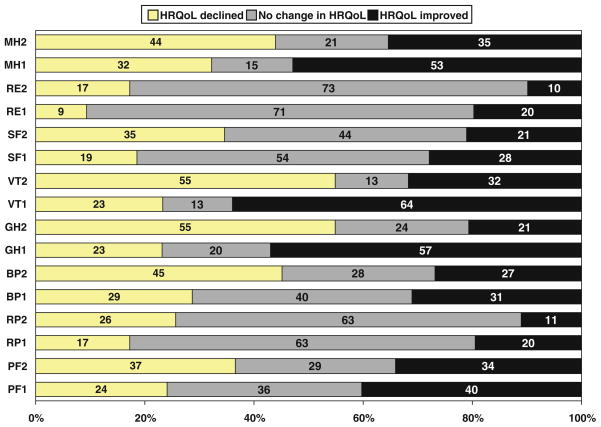Fig. 1.
shows the percent of participants with decreased (change score < 0), stable (change score = 0) or improved SF-36 (change score > 0) scores after each phase of the study for the eight SF-36 domains. The eight SF-36 domains are: PF—physical functioning; RP—role limitations due physical health; BP—bodily pain; GH—general health; VT—vitality; SF—social functioning; RE –role limitations due to emotional health; MH—mental health. The number after each domain refers to the phase of the study: 1—Phase 1 (the intensive weight loss phase); 2—Phase 2 (the weight maintenance phase). Change scores for Phase 2 refer to changes in HRQoL that occurred after Phase 1, from enrollment in Phase 2 to the end of the study. See text for further details on how the change scores for each phase were calculated. In general, the RP, RE and SF domains appeared minimally responsive; most participants in either phase reported no change in these domain scores. The percentage of participants with improvements in HRQoL was higher in Phase 1 compared to Phase 2 while the percentage of participants with declines was higher in Phase 2 compared to Phase 1

